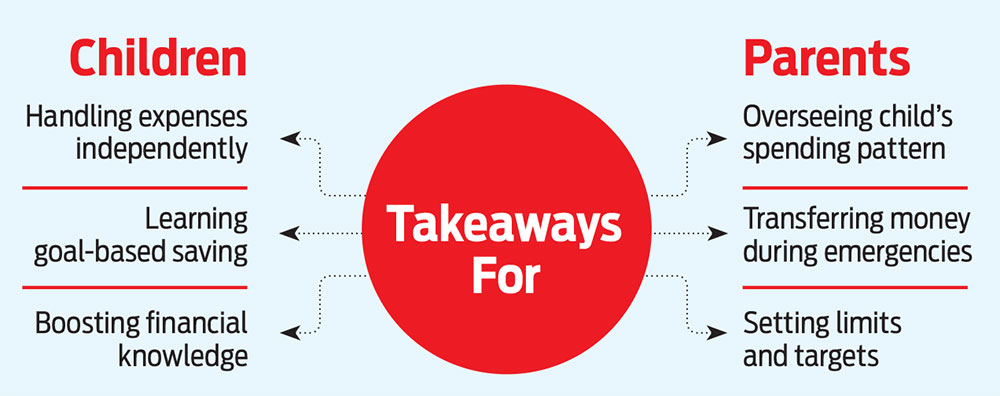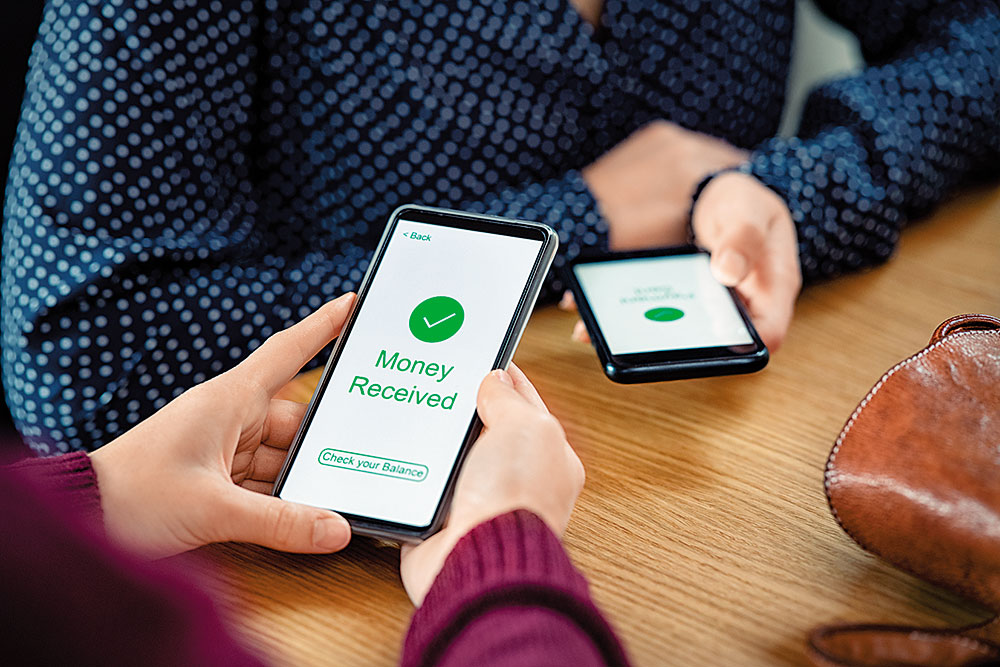If you grew up during the 1990s, you probably got your pocket money in the form of crisp notes or mint-fresh coins. That little wealth allowed you to savour delicacies at the neighbourhood samosa shops. Now, youngsters turn to their mobiles, be it for watching movies, listening to music or ordering clothes or online.
In keeping with the changing times, several fintechs have also begun facilitating payment of pocket money through apps or digital wallets. They offer the convenience of online and offline transactions via virtual and physical debit cards.
As a matter of fact, pocket money is a good way to teach healthy financial habits to children from an early age. Says Parul Maheswari, a certified financial planner, “Starting to learn personal finance from an early age can help people later. By giving pocket money, parents can inculcate healthy financial habits among children by helping them differentiate between good and bad purchase decisions.”
What Are E-Pocket Money Apps?
These apps work on the concept of pocket money, but maintain accounts over physical money.
A few, such as Muvin, FamPay and Junio also have features that inculcate savings habit among youngsters, while allowing the parents to oversee their spending.
That said, these apps don’t have a wide user base. According to a media report in 2021, Fampay and Junio have 1,350,142 and 250,000 users, respectively. They refused to disclose the actual numbers despite repeated requests.
Mukund Rao, co-founder of Muvin, explains the procedure. “A parent/guardian has to set up a primary wallet through a know your customer (KYC) process and then enable an independent wallet for the child,” he says.
After the wallet has been set up, the parent can directly transfer the pocket money or monthly allowance to it. Every wallet has a tie-up with a payments bank or traditional bank to offer cards. The cards can be used both offline and online.
Muvin offers a physical prepaid card and RuPay contactless keychain payment options in association with LivQwik Technologies Pvt Ltd. FamPay offers a numberless Visa card option through IDFC Bank. Junio has a tie-up with RBL Bank for a RuPay prepaid card. The charges vary. These wallets and cards are categorised as prepaid instruments and are regulated by the Reserve Bank of India (RBI).

What Works?
These apps can help the children independently learn how to handle expenses, understand the value of money, and learn goal-based saving. Says Rao: “The aim is to help young adults and teenagers gain financial literacy and independence at the school level itself so that they can learn how to save and spend wisely.”
Some of the apps also have features where parents can set up saving goals for their children, say, Rs 1,000 over a period of time to buy a gadget. Some explain financial jargons and processes through cartoons or videos. Muvin has video tutorials and allows parents to set goals for children, while Junio has a blog and also allows goal-setting.
Says Anshu Agarwal, finance head (India) of Branch International, a personal loan company: “Since these apps are digital, I can guide my child on where he can save money or if he is overspending. It would help my child understand the 80:20 rule (which says that 20 per cent of income should be saved) as early as possible.”
These apps can also come handy during an emergency. “Parents can transfer funds to the wallets, and it is safer than lost cash,” adds Agarwal.
Some of these cards also offer rewards. Fampay gives Fampay coins for paying through the card, while Muvin has Muvincoins for the same.
What They Don’t Provide
Easy Access: These apps give easy access to money, which is why it is important for parents to keep vigil. “It is important for parents to control the wallet and monitor it closely and also ask the child about his intentions of spending. Since the child is young, he/she is likely to lack an understanding of money—how to earn, save, grow and spend,” says Kartik Parekh, a Sebi-registered investment advisor and co-founder of fintech platform Gochanakya. Seeing ready cash can be tempting for children who are into online games and tech. “Children are exposed to technology from an early age,” says Parekh.
Risk Of Loans: As of now, none of these apps have a provision for loans, but there are reports they might start soon. Easy access to loans could induce the children to spend recklessly. “Since purchasing anything becomes very easy, children might end up exhausting all their limits much early, and end up taking loans,” says Agarwal.
Cost: While you do not need to pay any fee to give pocket money to your children the traditional way, i.e., through cash or bank account, these apps come with a fee. They differ according to the services on offer.
For instance, Fampay has two cards that come with a signing fee of Rs 399 and Rs 299, respectively. Junio’s card has a signing fee of Rs 99. Muvin charges Rs 99 for dependent children, and Rs 249 for people older than 25 years; Muvin keychain costs Rs 249 for dependents, and Rs 499 for those older than 25 years. It is also important to read the terms and conditions carefully to understand other charges, if any.
Privacy Concerns: Since these apps would be recording some amount of data of your children, it’s important to see how they will use this data.
Says Parekh: “Parents should study the user agreement document of these apps before they let them use the details of their children. The data could be used or misused for cross-selling of products, among other things.”
Giving pocket money to children can surely help build financial discipline, but whether you want to stick to the traditional route or go for innovations is a decision you should take as a parent after due diligence and consideration.
neelanjit@outlookindia.com







